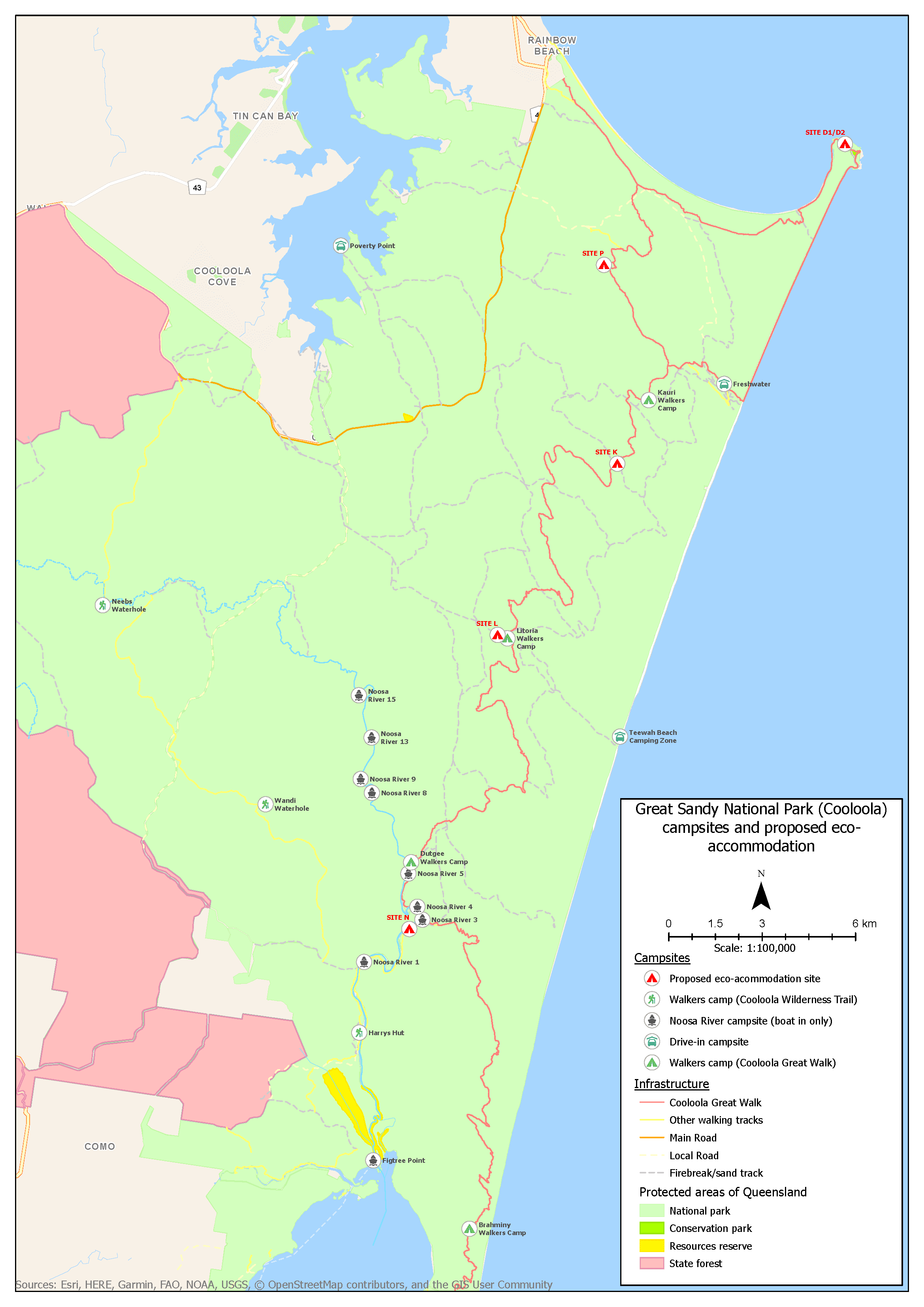
Notification of REFERRAL DECISION
The Cooloola Great Walk, Great Sandy National Park is an existing 102 kilometer walking and camping experience that links Noosa North Shore with Rainbow Beach.
The Cooloola Great Walk ecotourism project is being delivered through a collaborative model with the Queensland Government, a private proponent, CABN, the local Traditional Owners, the Kabi Kabi People, and the local community. It is estimated at peak capacity, the operation will cater for approximately 5500 guests per year, considerably more than current use of the Cooloola Great Walk, which despite having capacity for 12,000 campers annually, is estimated to attract (typically) less than 2000. CABN will offer guided and self guided through walks and corporate team building walks (1×5 night; 1x 2night).
-
Whilst the project uses the existing Cooloola Great Walk and the extensive public four wheel drive sand track and beach driving infrastructure:
CABN proposes to construct five eco-accommodation sites along the existing Cooloola Great Walk. Each campsite is reportedly “low impact and self-sufficient”, catering only to overnight hikers and comprise a lease footprint <0.5ha per site (all clearing/disturbance). -
The Department of Environment and Science would need to construct ~650m of new service vehicle access to connect proposed sites to the existing 4WD track network within the Great Sandy National Park and approximately 720m of new walking track to connect sites to the existing Cooloola Great Walk
The Federal Government has deemed this proposal “Not A Controlled Action” requiring no conditions of approval. The remaining hurdle for the Proponent (the State Government) is state approval.
NPAQ’s concerns are:
-
direct and indirect impacts on Endangered or Vulnerable fauna and flora and their habitats associated with edge effects (i.e. 50- 150m in each direction) along the proposed new service road, walking track, and five new camp locations vegetation.
-
the Electrical Resistivity Imaging survey conducted by GHD has potential for inaccuracies and has not been verified.
-
the management of the disposal of advanced secondary treated effluent, particularly in relation to nutrient removal and sandy soils.
-
lack of quantification of the ecological impacts on wildlife of vehicle movements during mobilisation, construction and operation.
-
lack of an assessment of the project’s water balance, which takes into consideration climate change and the transport of potable water.
NPAQ recommends, if the project proceeds:
-
conditions of approval and or lease includes limits on usage (maximum visitor numbers per week and provision for recovery), the number of vehicle movements, and dawn and dusk restrictions to minimise wildlife impacts.
-
all mitigation requirements specified in ecological reports are conditioned in the approval and/or lease.
-
additional ranger resources are provided to periodically inspect construction and operations regularly rather than relying on self-reporting.
-
conditions of approval and or lease there provides for an unannounced, independent audit during clearing and annual operations.
-
eco-guides are or become embedded in the community to drive a genuine knowledge of the values of the park rather than superficial overview typical of seasonal guides.


